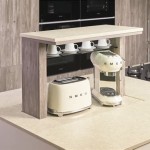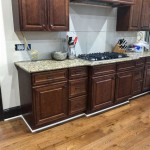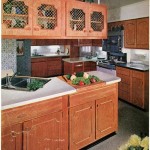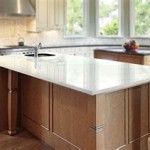How to Remove Nicotine Residue From Kitchen Cabinets
Nicotine residue, accumulating from years of smoking indoors, can leave kitchen cabinets with a stubborn, yellowed, and sticky coating. This residue is not only unsightly but also contributes to an unpleasant odor and can potentially affect the air quality within the home. Effective removal requires a methodical approach using appropriate cleaning agents and techniques.
Before commencing any cleaning process, it is crucial to understand the composition of the cabinets. Different materials require different cleaning solutions. Wood cabinets, whether varnished, painted, or stained, will react differently compared to laminate or metal cabinets. Identifying the cabinet material will dictate the most effective and safest cleaning method to employ.
Proper ventilation is paramount throughout the cleaning process. Open windows and doors, or utilize exhaust fans to ensure adequate airflow. This will help dissipate the cleaning fumes and carry away any lingering nicotine odor. The use of personal protective equipment, such as gloves and masks, is also highly recommended to prevent skin irritation or inhalation of cleaning agents and dislodged nicotine particles.
Key Point 1: Assessing the Cabinet Material and Applying a Test Spot
The first step is to accurately identify the material your kitchen cabinets are made of. Common materials include solid wood (oak, maple, cherry), wood veneer, laminate, thermofoil, and metal. Solid wood cabinets, especially those with a varnish or lacquer finish, are generally more durable and can withstand stronger cleaning solutions. Laminate cabinets, on the other hand, are more susceptible to damage from abrasive cleaners or excessive moisture. Thermofoil cabinets, which are covered in a thin vinyl layer, can be easily damaged by heat and harsh chemicals. Metal cabinets are typically the most durable and can tolerate a wider range of cleaning agents.
Once the material is identified, select a cleaning solution appropriate for that surface. A common starting point is a mixture of warm water and dish soap. For more stubborn residue, a solution of vinegar and water can be effective. However, avoid using undiluted vinegar on varnished wood, as it can damage the finish. Commercially available degreasers labeled as safe for kitchen cabinets can also be used, but always read the manufacturer's instructions carefully.
Before applying any cleaning solution to the entire surface of the cabinets, it is essential to perform a test spot in an inconspicuous area, such as the inside of a cabinet door or on a lower corner. Apply a small amount of the cleaning solution to the test spot and let it sit for a few minutes. Then, wipe it away with a clean cloth. Observe the area for any signs of damage, such as discoloration, peeling, or softening of the finish. If no damage is observed, the cleaning solution is likely safe to use on the rest of the cabinets. If any damage occurs, discontinue use and seek a gentler cleaning alternative.
This test spot process also helps determine the effectiveness of the chosen cleaning solution in removing the nicotine residue. If the test spot shows significant improvement in removing the yellowing and stickiness, the chosen solution is likely suitable for tackling the entire job. If the test spot shows minimal effect, it may be necessary to experiment with a stronger cleaning agent, always remembering to test in an inconspicuous area first.
Key Point 2: Selecting and Utilizing Appropriate Cleaning Solutions and Tools
After completing the test spot and confirming the suitability of a cleaning solution, the next step involves gathering the necessary tools and preparing the cleaning area. Essential tools include: microfiber cloths (several, for wiping and drying), a soft-bristled brush (for scrubbing stubborn areas), spray bottles (for applying cleaning solutions), a bucket (for rinsing), gloves (to protect hands), and eye protection (if using spray cleaners).
When selecting cleaning solutions, consider the level of nicotine buildup and the cabinet material. For light nicotine residue, a simple solution of warm water and dish soap often suffices. Mix a few drops of dish soap into a bucket of warm water and use a microfiber cloth to wipe down the cabinets. Rinse frequently with clean water and dry thoroughly with a separate microfiber cloth.
For moderate nicotine buildup, a solution of vinegar and water can be more effective. Mix equal parts white vinegar and warm water in a spray bottle. Spray the solution onto the cabinets and let it sit for a few minutes before wiping it away with a clean microfiber cloth. Again, rinse thoroughly with clean water and dry with a separate cloth. The acetic acid in vinegar helps break down the nicotine residue and deodorizes the cabinets.
For heavy nicotine buildup, a stronger degreaser may be necessary. Commercially available kitchen degreasers are formulated to cut through grease and grime, which can also help dissolve nicotine residue. Always follow the manufacturer's instructions carefully and ensure the degreaser is safe for the specific type of cabinet material. When using a degreaser, wear gloves and eye protection to prevent skin and eye irritation.
Baking soda paste can also be used as a gentle abrasive cleaner for stubborn spots. Mix baking soda with a small amount of water to form a paste. Apply the paste to the affected area and gently scrub with a soft-bristled brush. Rinse thoroughly with clean water and dry with a microfiber cloth. Baking soda is a mild abrasive that can help loosen the nicotine residue without damaging the cabinet finish.
Steam cleaners can also be effective in removing nicotine residue. The hot steam loosens the grime, making it easier to wipe away. However, caution should be exercised when using steam cleaners on wood or laminate cabinets, as excessive moisture can damage the material. Use a low steam setting and avoid holding the steam nozzle in one place for too long.
Key Point 3: Implementing a Thorough Cleaning Process and Maintenance Routine
Once the cleaning solutions and tools are chosen, the actual cleaning process can commence. Start by dusting the cabinets with a dry microfiber cloth to remove any loose dirt or debris. This prevents the dirt from being ground into the surface during the cleaning process.
Apply the chosen cleaning solution to the cabinets, either by spraying it directly onto the surface or applying it with a damp microfiber cloth. Allow the solution to sit for a few minutes to loosen the nicotine residue. For stubborn areas, gently scrub with a soft-bristled brush. Avoid using abrasive scrub pads, as these can scratch the cabinet finish.
After scrubbing, rinse the cabinets thoroughly with clean water. Use a clean, damp microfiber cloth to wipe away any remaining cleaning solution. Ensure all traces of the cleaning agent are removed, as residue can attract dirt and grime.
Dry the cabinets immediately with a clean, dry microfiber cloth. This prevents water spots and helps maintain the cabinet finish. Pay particular attention to seams and edges, where water can accumulate and cause damage over time.
For cabinets with intricate carvings or decorative details, use a cotton swab or a soft toothbrush to clean hard-to-reach areas. Dip the cotton swab or toothbrush into the cleaning solution and gently scrub away any nicotine residue that has accumulated in the crevices.
After the initial cleaning, it is essential to establish a regular maintenance routine to prevent the buildup of nicotine residue in the future. Regularly wipe down the cabinets with a damp microfiber cloth to remove any surface dirt or grime. This will help prevent the nicotine from adhering to the surface and becoming more difficult to remove.
Consider using an air purifier with a HEPA filter to remove smoke particles from the air. This can help reduce the amount of nicotine that settles on the cabinets and other surfaces in the home. Opening windows regularly to ventilate the kitchen can also help reduce the accumulation of smoke and odors.
If smoking indoors cannot be avoided, designate a specific area for smoking and ensure that the area is well-ventilated. This will help minimize the spread of nicotine residue throughout the house. Regularly clean the designated smoking area to prevent the buildup of smoke and odors.
For heavily nicotine-stained cabinets, multiple cleaning sessions may be necessary to achieve optimal results. Repeat the cleaning process several times, allowing the cleaning solution to sit for a longer period each time. With persistent effort, even the most stubborn nicotine residue can be removed, restoring the cabinets to their original condition.
Finally, consider applying a protective coating to the cabinets after cleaning. A coat of wax or polish can help protect the finish and make it easier to clean in the future. Choose a product that is specifically designed for the type of cabinet material and follow the manufacturer's instructions carefully.

Are These Cabinets Discolored From Cigarettes

Housecleaning Tips How To Clean Nicotine Stains

How To Clean Cigarette Smoke Damaged Cabinets Hunker

Painting Kitchen Cabinets White Noting Grace

Painting Kitchen Cabinets White Noting Grace

This Is What 20 Years Of Smoking Will Do To Inside Your House It Took Professional Cleaners Six Hours Clean The Us Sun

The Best Way To Get Smoky Smells Off Of Wood Furniture Jennifer Rizzo

Restoring Your Al Property From Cigarette Smoke Nicotine

How To Remove Nicotine From Appliances Ehow

Pin On For The Home
Related Posts








